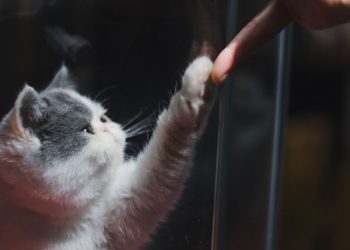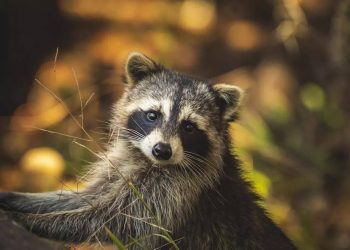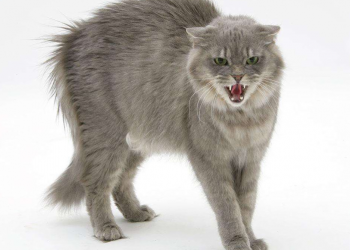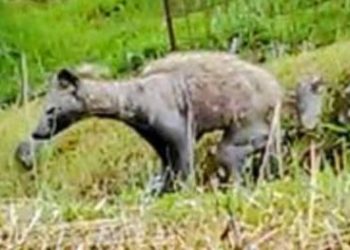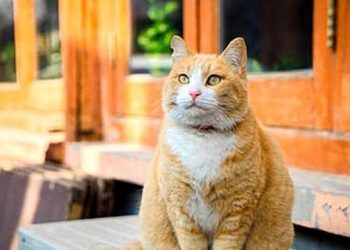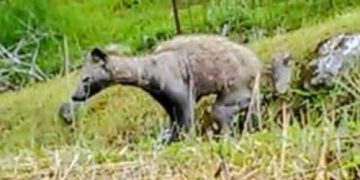Raccoons don’t face much threat.
Raccoons are smart and nimble little creatures, and because they don’t face many threats, there are large numbers of raccoons in most of North America. While they look fun, they are not the safest animals.
1. They are opportunists
Raccoons are omnivores and opportunistic eaters, which means they eat whatever is most convenient for them. Their diet includes nuts, berries, fruits, acorns, grasshoppers, mice, fish, frogs, insects, small mammals, land birds and their eggs.
Raccoons are also scavengers. They rummaged through trash cans and compost piles, and stole pet food that had been left out overnight. They climb on bird feeders and also eat bird food.
2. They seem to wash food before eating
If you observe raccoons eating, you will notice that they often seem to wash their food before eating. If there is no water around, they will still do the same thing, moving their front paws over the food and moving the food up and down. However, it wasn’t cleaning habits that led to this behavior, the researchers said.
Wildlife biologists believe that raccoons have very sensitive nerves in the fingers of their front paws. As they search for food in the water, they feel around with their paws to gather sensory information. In a study of 136 raccoons, researchers found that moisturizing the skin helped increase the responsiveness of these nerves. But even without water around, the soaking ritual helps them grab food and deliver it to their mouths.
3. They live almost anywhere
According to the International Union for Conservation of Nature, raccoons live in every corner of the continent except in parts of the Rocky Mountains and deserts. They are not picky about where they live, as long as there is water nearby. They nest on the ground, in tree holes or in rock crevices. In more urban areas, they venture into homes, nesting in attics, chimneys, and crawl spaces beneath houses.
4. Their black faces are anti-glare devices
The dark areas of a raccoon’s face can help divert sunlight.
Raccoons are known for their bandit-like black faces. One theory is that the distinctive black markings help deflect sunlight and may also improve night vision. Some researchers have theorized that black faces work in animals to keep their eyes hidden from predators. But a study published in the Journal of Biology concluded that these dark patterns were most likely anti-glare devices.
5. They are smart animals
Raccoons are very smart. Some scholars even believe that their discrimination ability is equal to or even better than that of domestic cats.
In a 2017 study published in the journal Animal Cognition, researchers evaluated eight captive raccoons to understand cause and effect. The researchers showed the raccoon a cylinder filled with water that contained marshmallows that were too low for the raccoons to catch. The researchers then demonstrated that if they dropped pebbles into the cylinder, the water level would rise so the raccoons could grab the food. Two raccoons learned how to throw rocks to get food. The third found an easier way: It flipped the tube over to get to the marshmallow more quickly. The researchers concluded that raccoons “are innovative in many aspects of this task.
6. They are very nimble
The raccoon’s paw rests on the human palm.
Raccoons have five toes on their front and back paws. Their forepaws are particularly dexterous, and they look and move like slender human hands.
They use dexterous finger-like toes to hold and manipulate food, as well as a range of objects, including latches, lids, jars, boxes, and doorknobs. That’s why they seem to get into just about anywhere, and it’s easy to lift trash can lids and open all kinds of containers.
7. They stick to their nests
Raccoons are mostly solitary animals. As nocturnal animals, they rarely venture out during the day, staying as close to their dens as possible and only travel far when they get the food and water they need.
Occasionally, a group of female raccoons will come together, but when it comes time to breed and raise offspring, each female raccoon will be separated from the group. Females stay with their young, called pups, until they are about a year old. Males may stay with females for a month before breeding, then leave after the pups are born.
8. They face few threats
Raccoon skins in the garment workshop.
Although many animals have declined in numbers due to human urbanization and economic growth, raccoons have adapted easily to live with humans. According to the IUCN, northern raccoons are the “least concern” species and their numbers are on the rise.
While the survival of raccoons is not under major threat, they do face danger. They are hunted for entertainment, for their fur. In suburban areas and near water, raccoons are among the victims of traffic accidents. Additionally, raccoons are often considered pests by homeowners and farmers to hunt, trap and poison. In other human settings, they’re actually considered pest control tools, like at the San Diego Zoo, where they help manage rodent populations.
9. They like urban environments
Raccoons have experienced “amazing” growth in cities and suburbs over the past 80 years. Because they’re so smart, raccoons living in cities are developing skills that rural raccoons don’t; they’re learning how to get through artificial obstacles. They adapt to a variety of sleeping places, using their nimble fingers to open trash cans, enter garages and other structures, and climb fire escapes. Raccoon-infested Toronto has unfortunately won the title of “raccoon capital of the world”, and the mayor of the city even declared war on raccoons.
10. They multiply
Raccoons are easier to breed than many other wild animals. They only breed once a year, but a female can produce an average of three to four young. It often waits until the last minute to find its den to give birth, which is why urban buildings are so appealing; they have many hiding places that can be reached immediately. A mother raccoon is very maternal and can cause great harm if separated from her baby. Babies spend their first winter with their mothers before venturing out on their own.
11. They carry diseases and parasites
Raccoons are the second most common rabid wildlife species after bats. They can carry the virus without any outward signs or symptoms. However, human rabies cases are rare. Between 2009 and 2019, only 25 human rabies cases were reported, of which only two were linked to raccoons.
Raccoons also carry raccoon roundworm, a serious disease that can cause nerve damage and spread by ingesting soil or other substances contaminated with feces from infected raccoons. Additionally, raccoons may carry leptospirosis and canine distemper.

